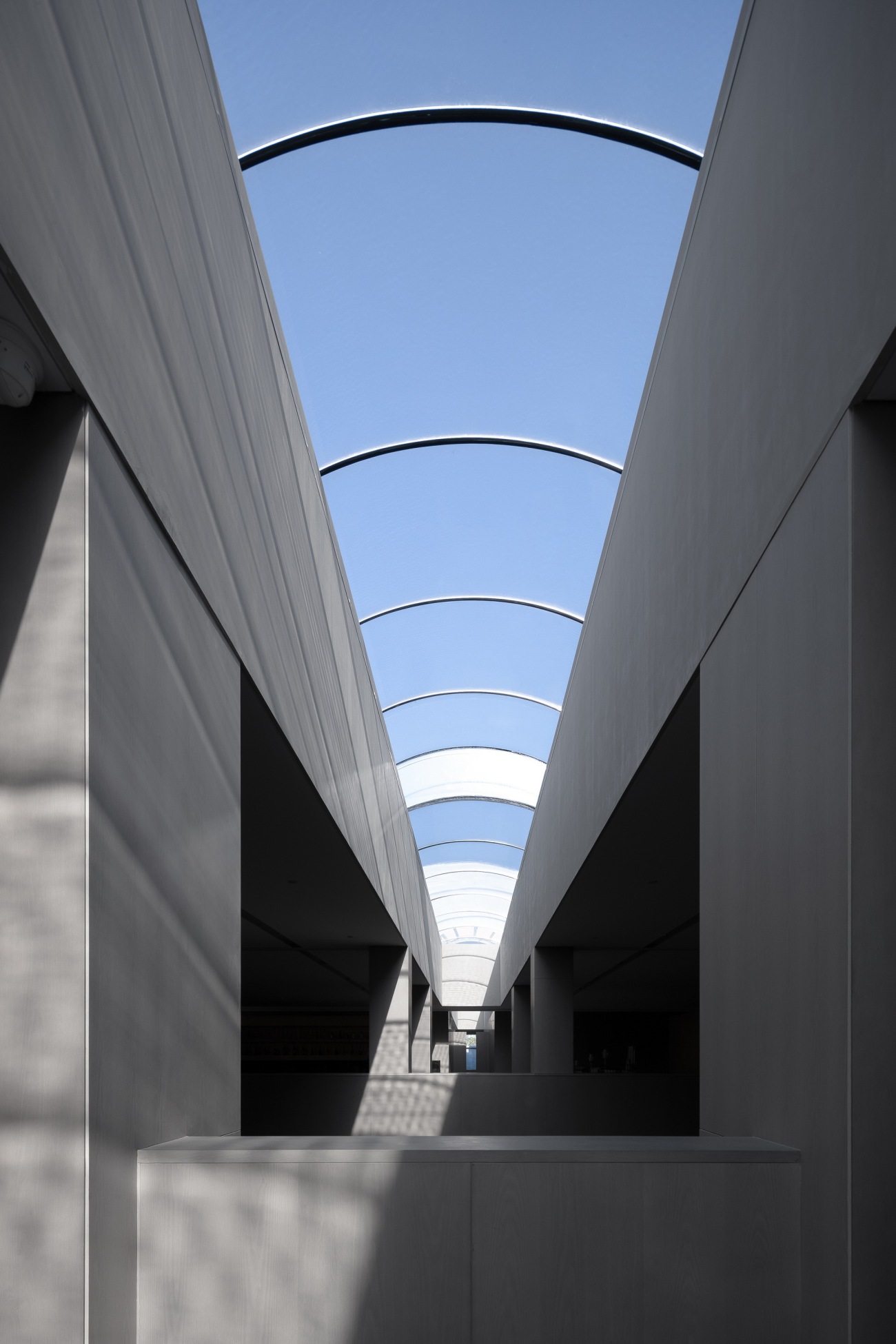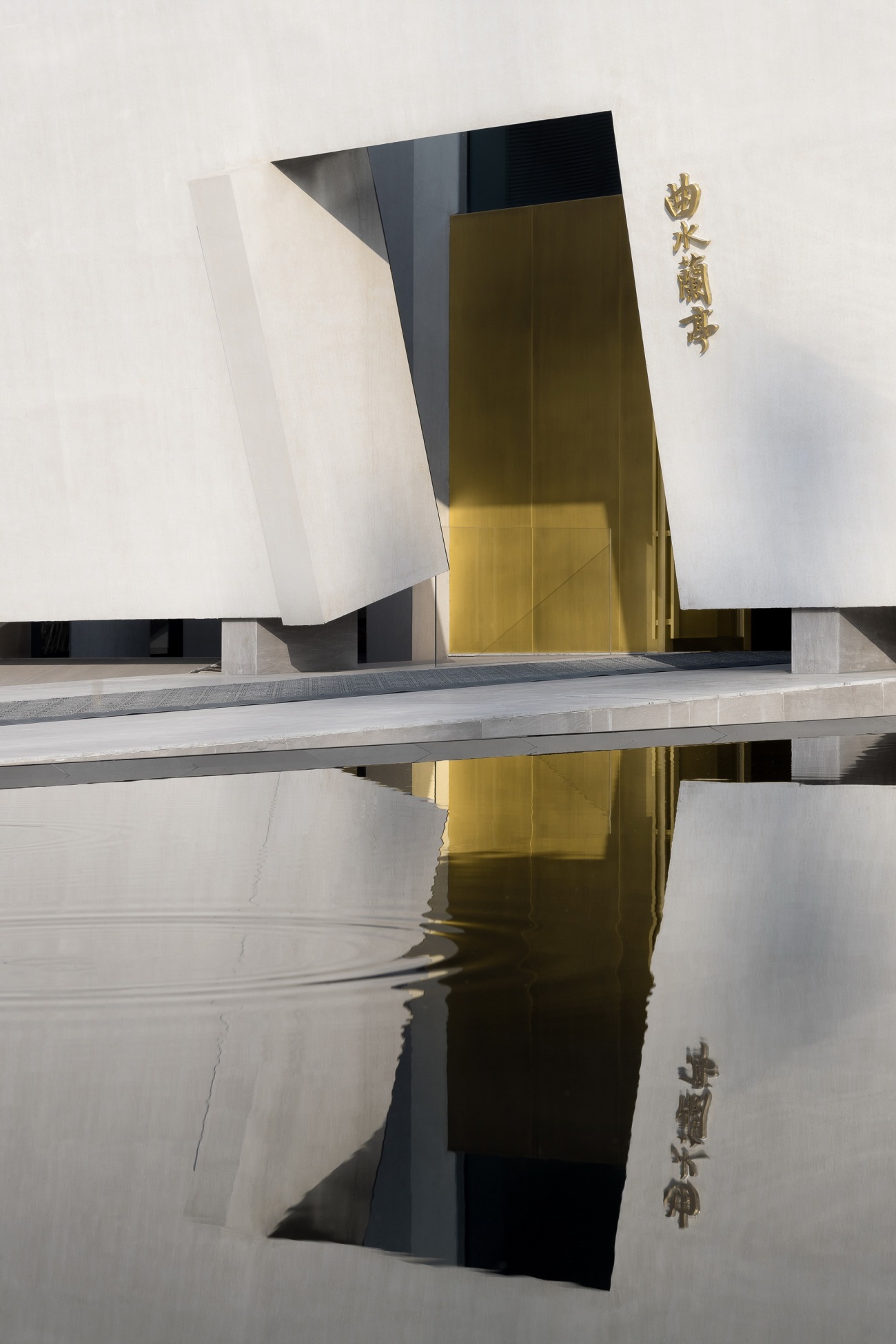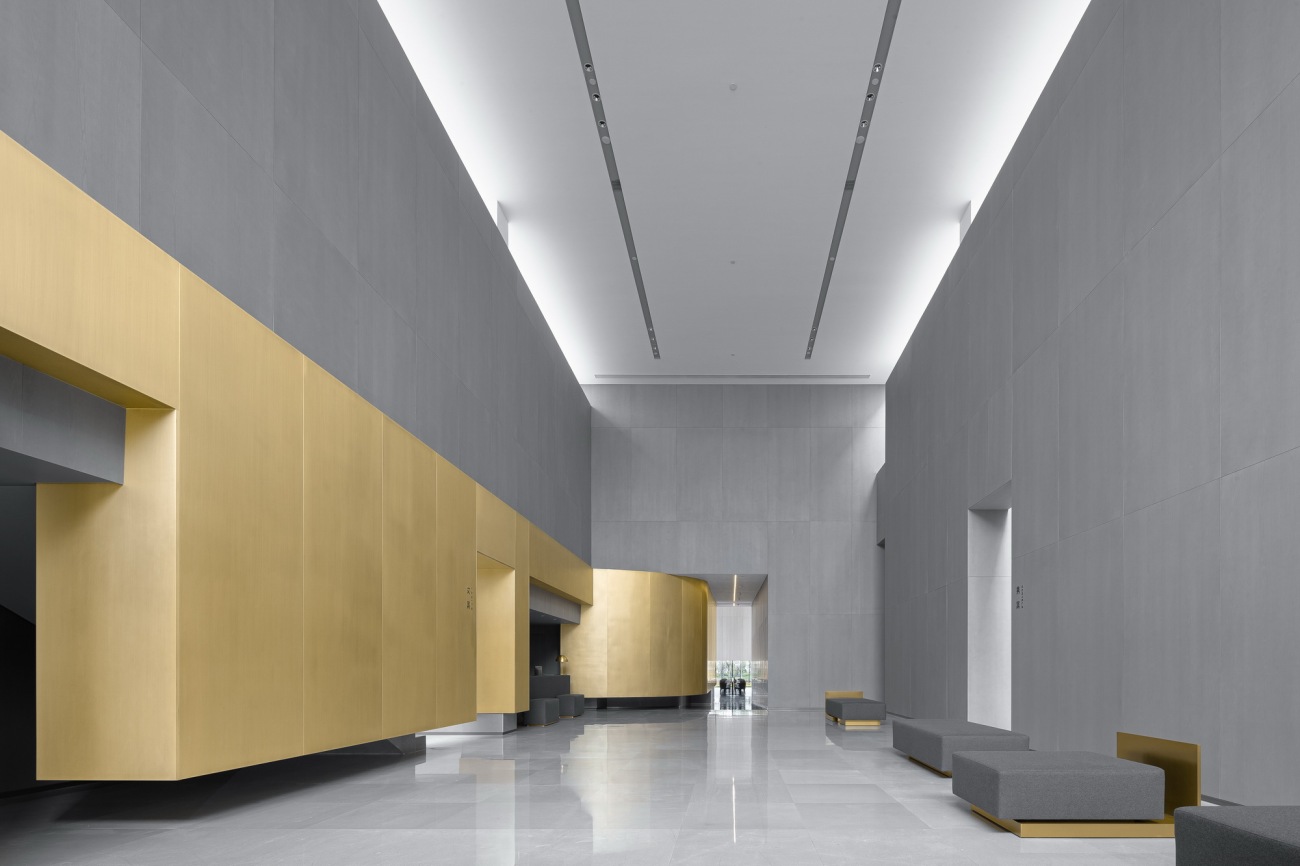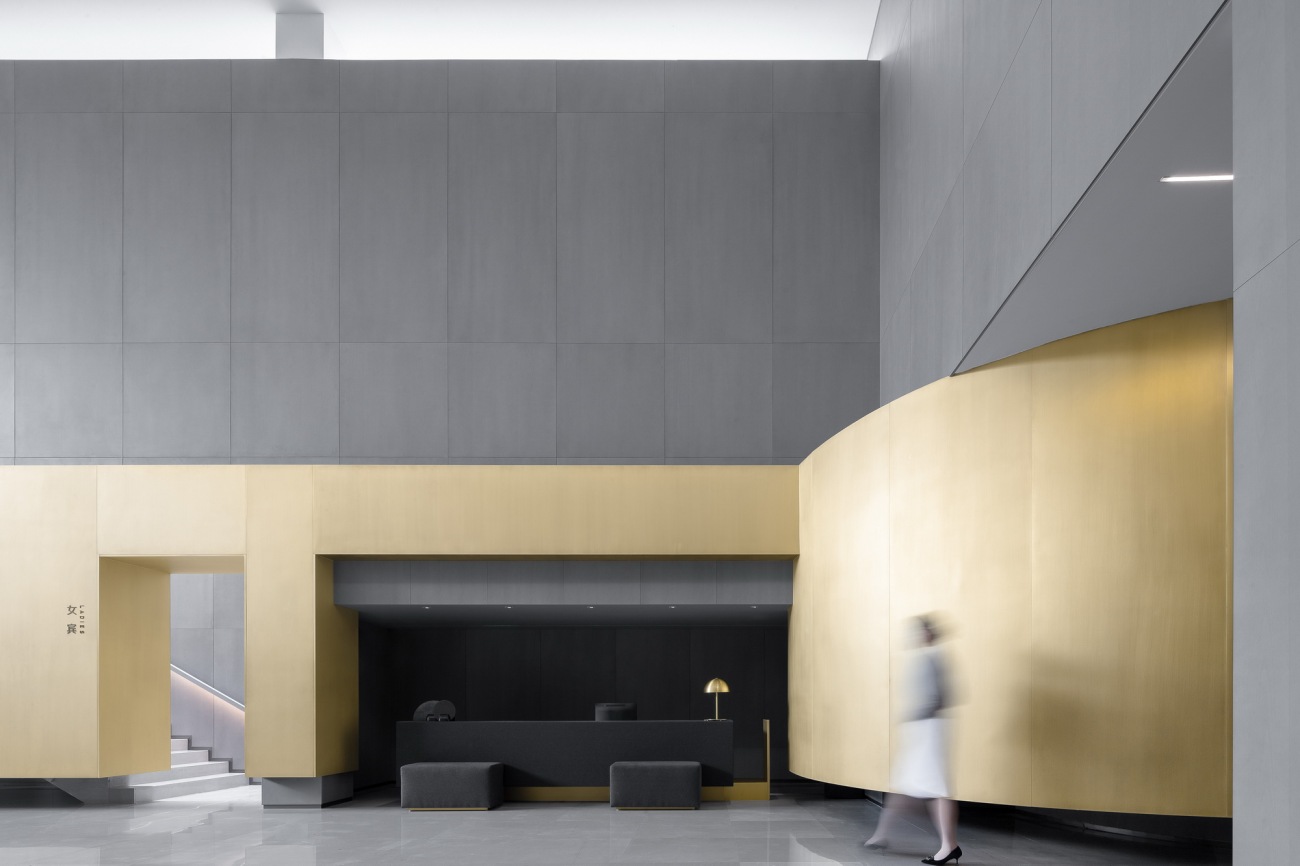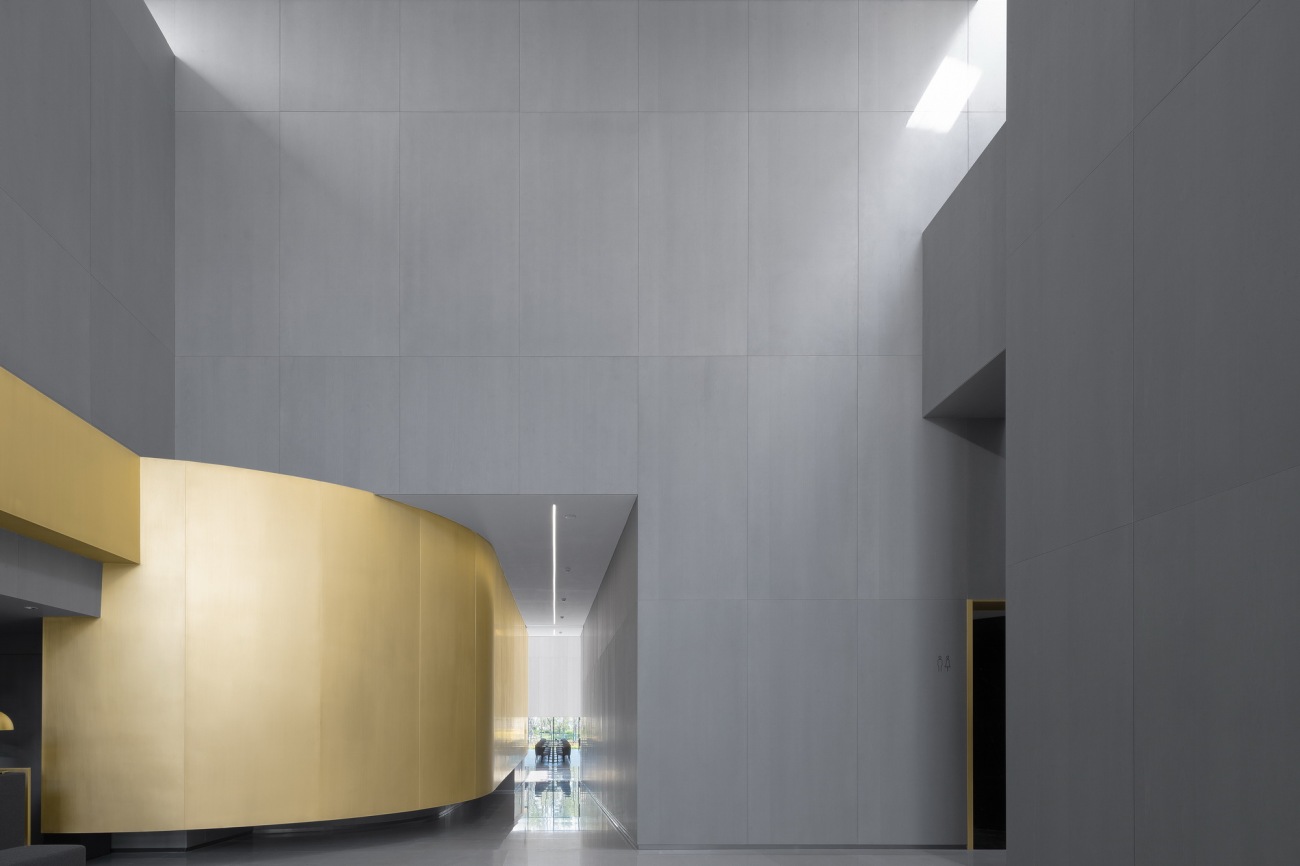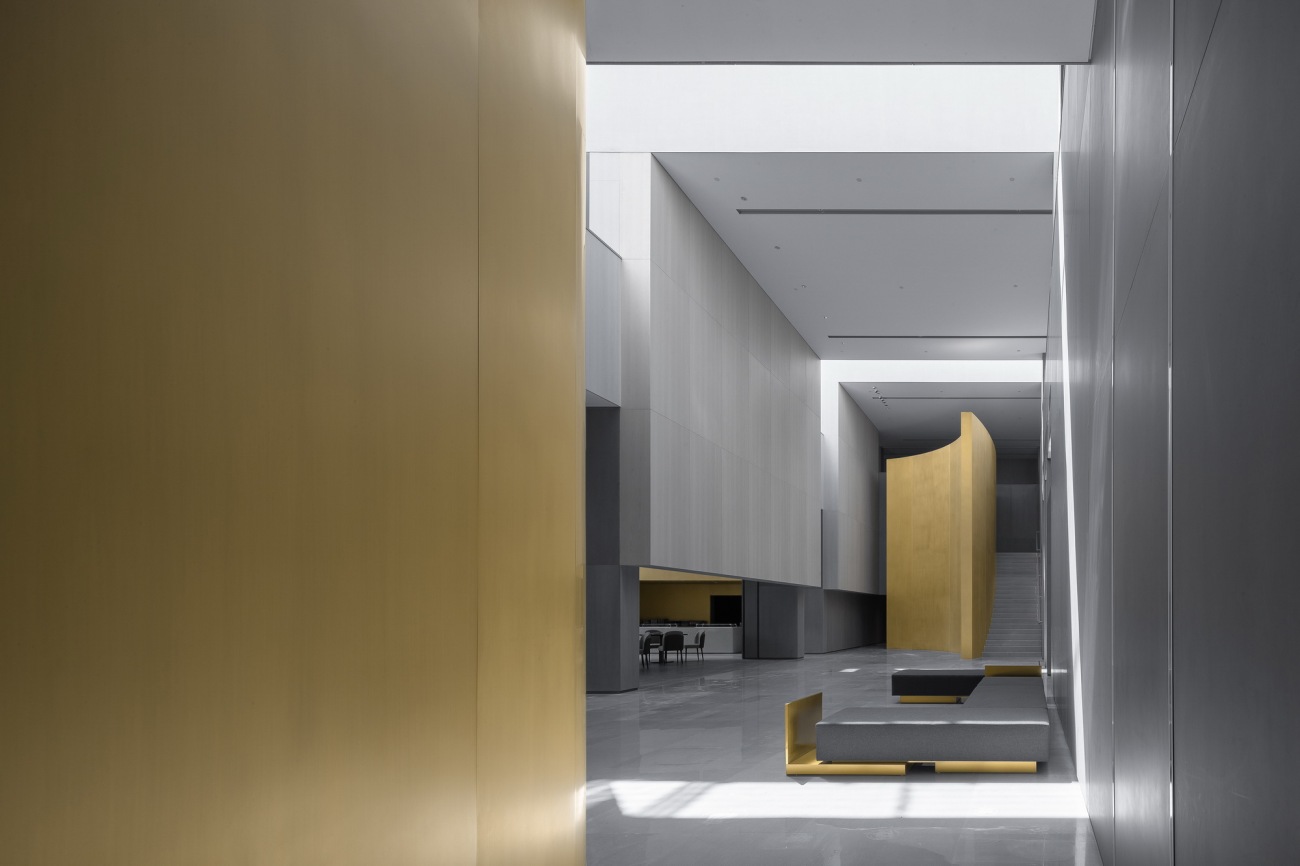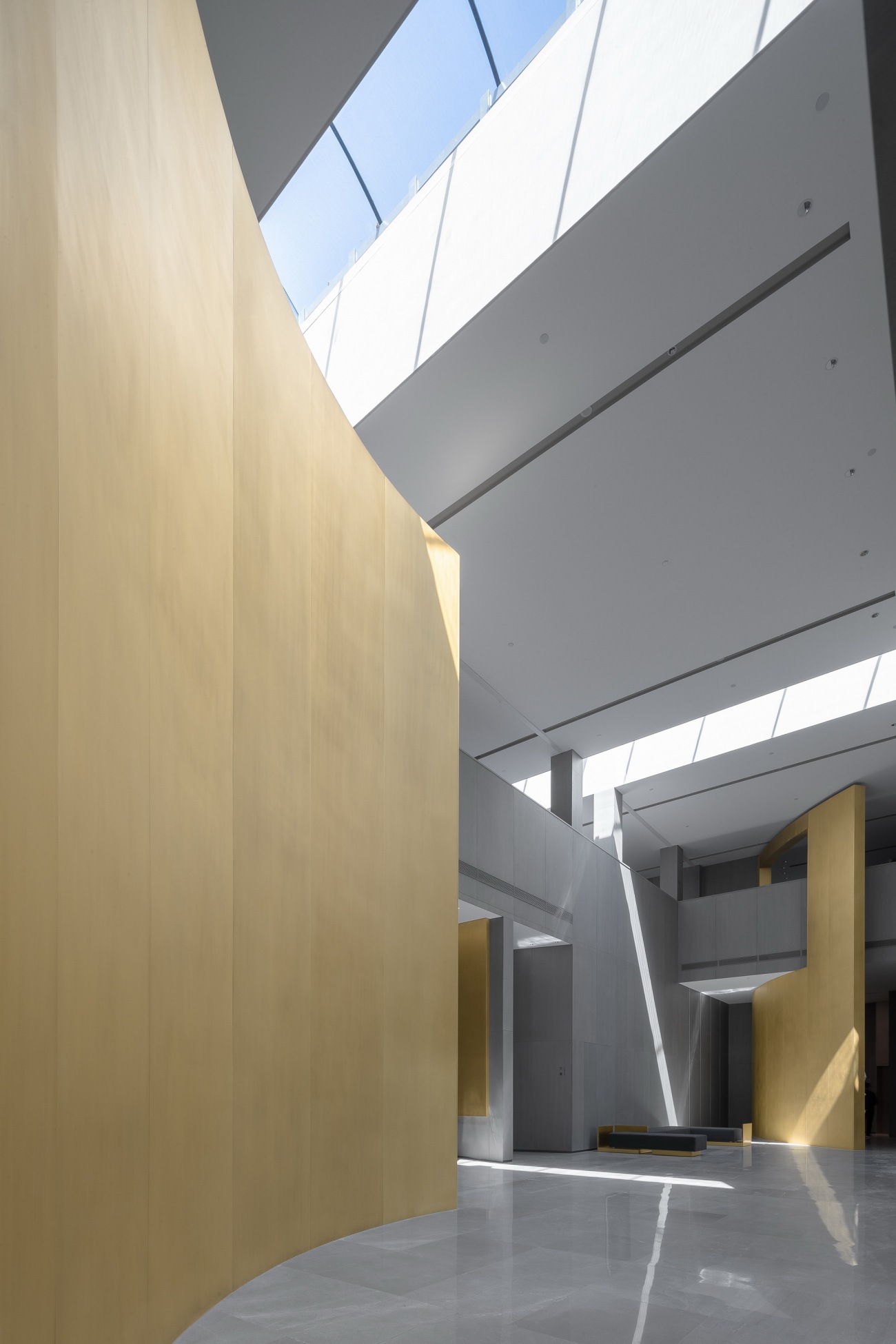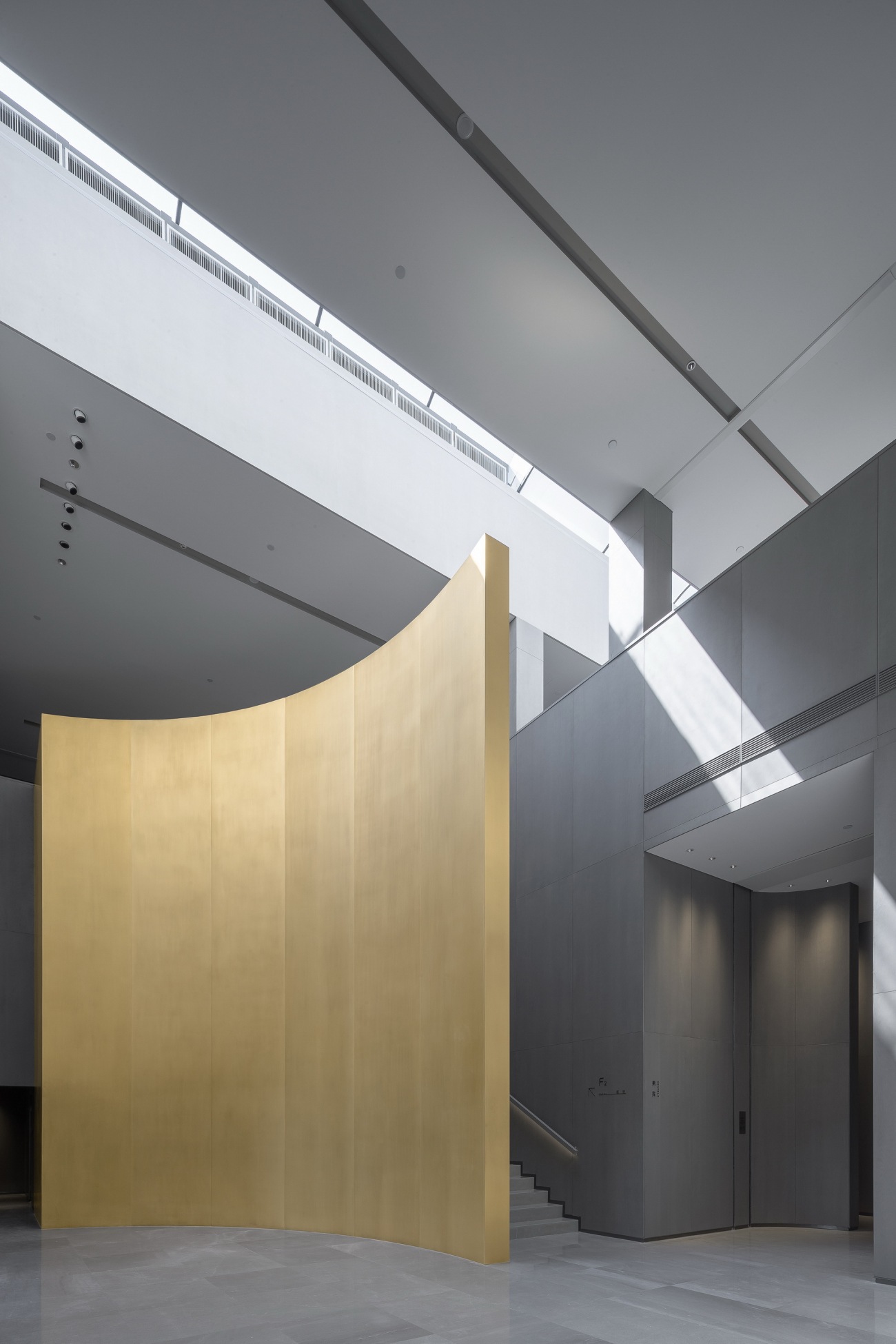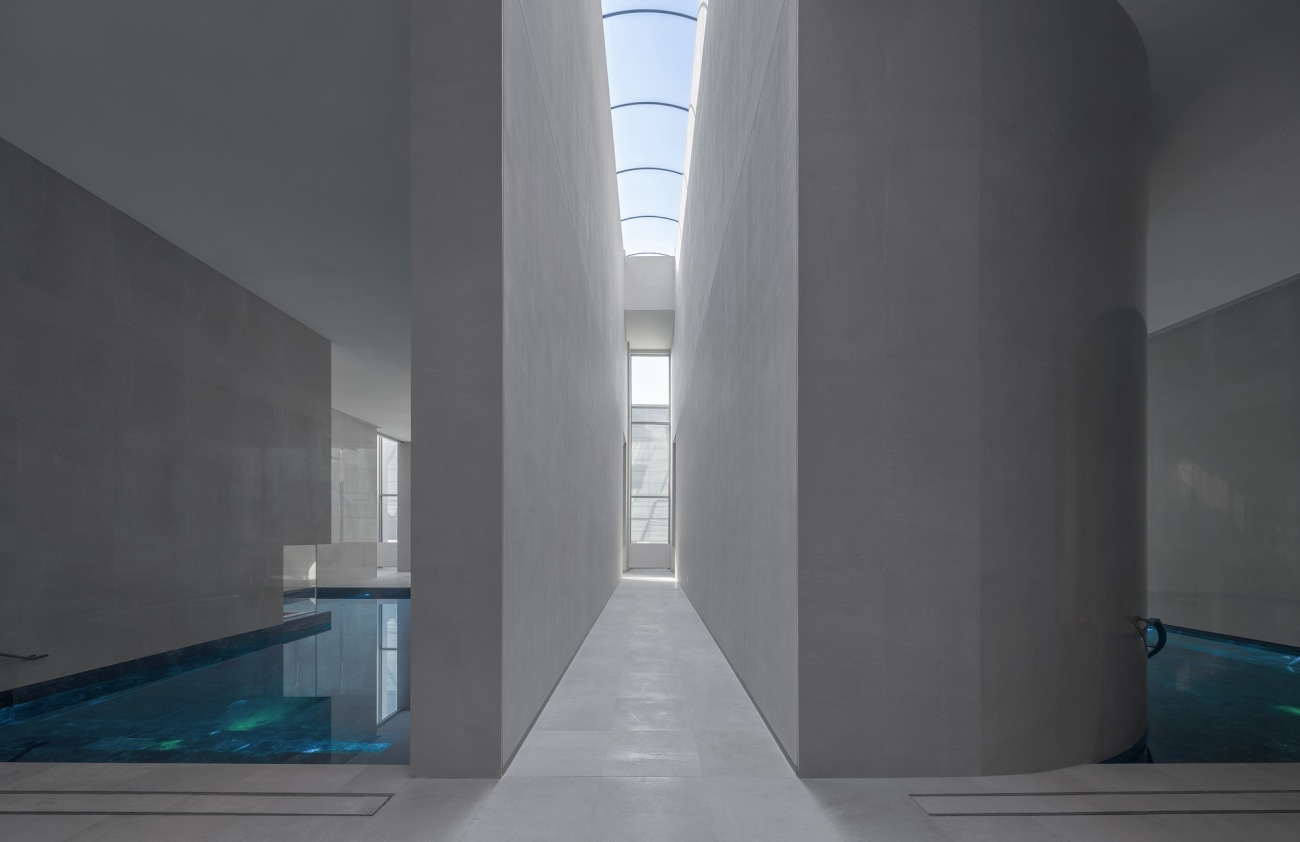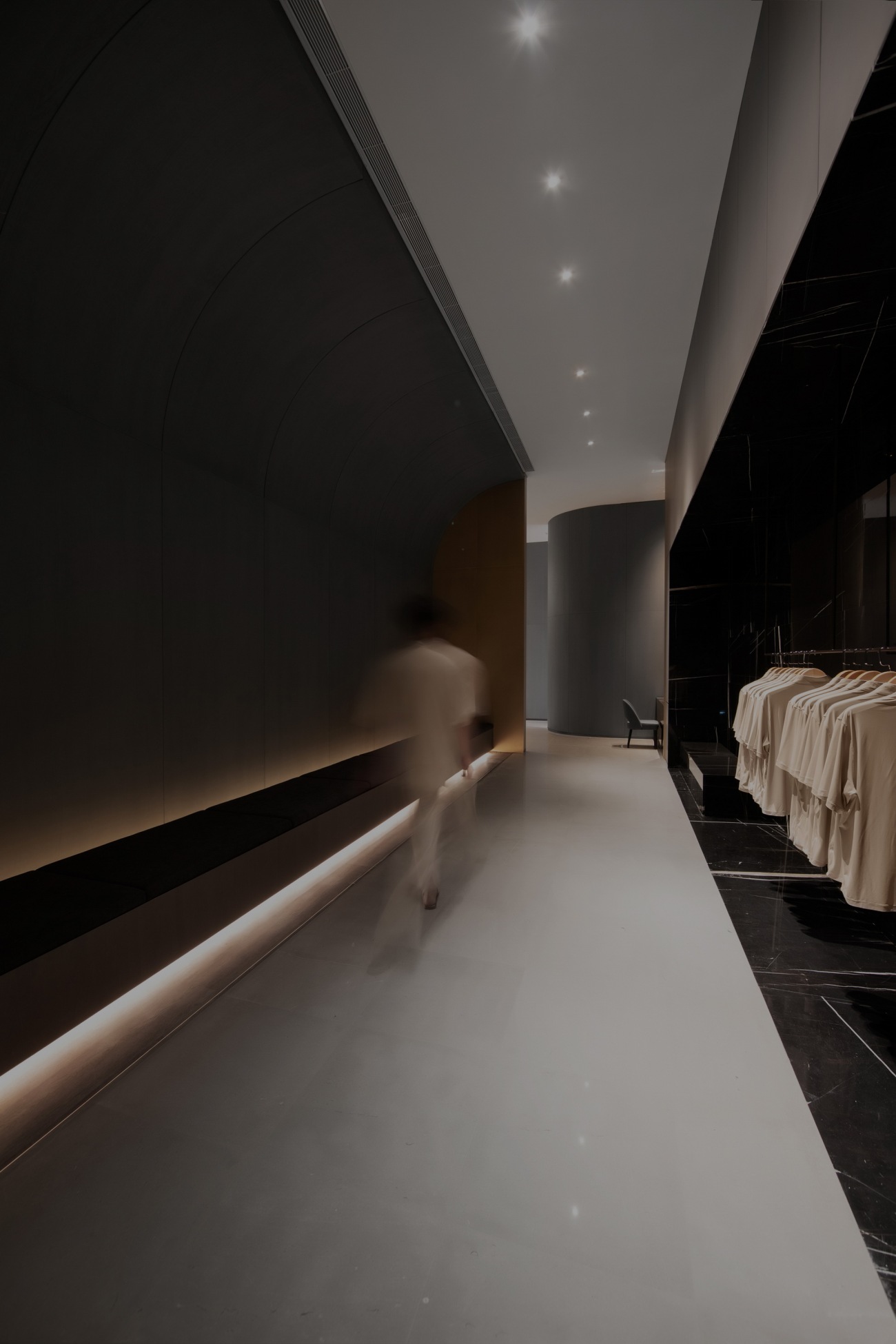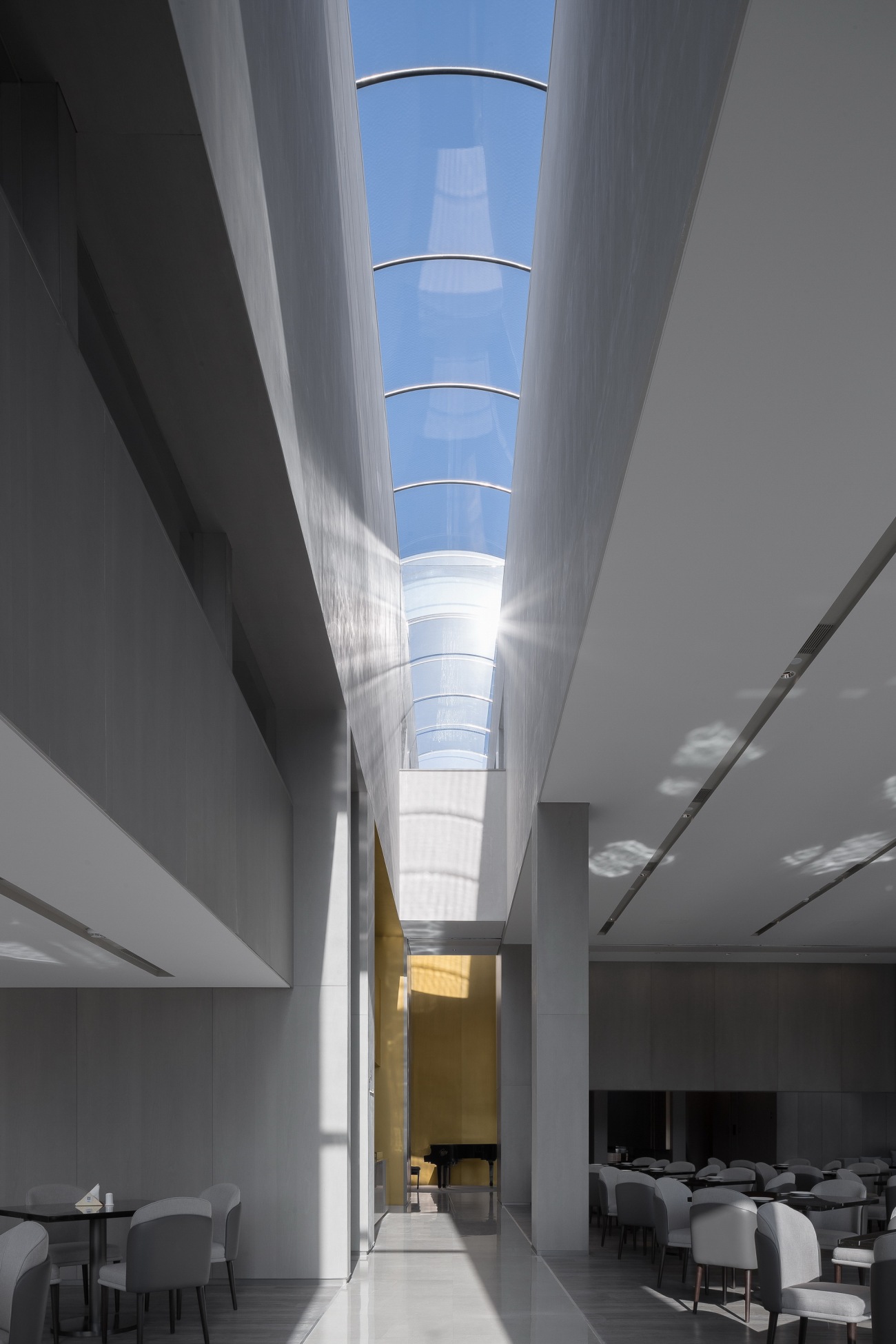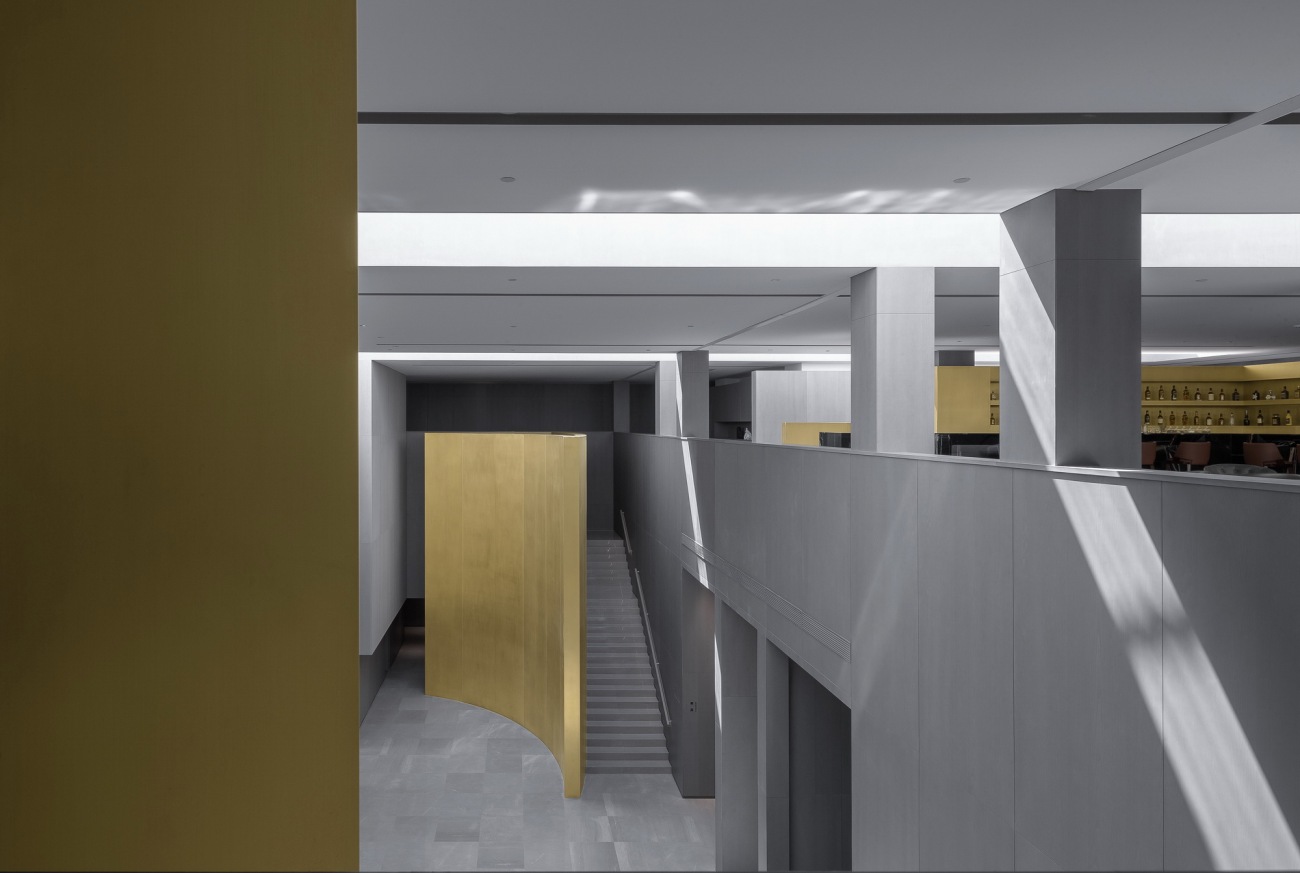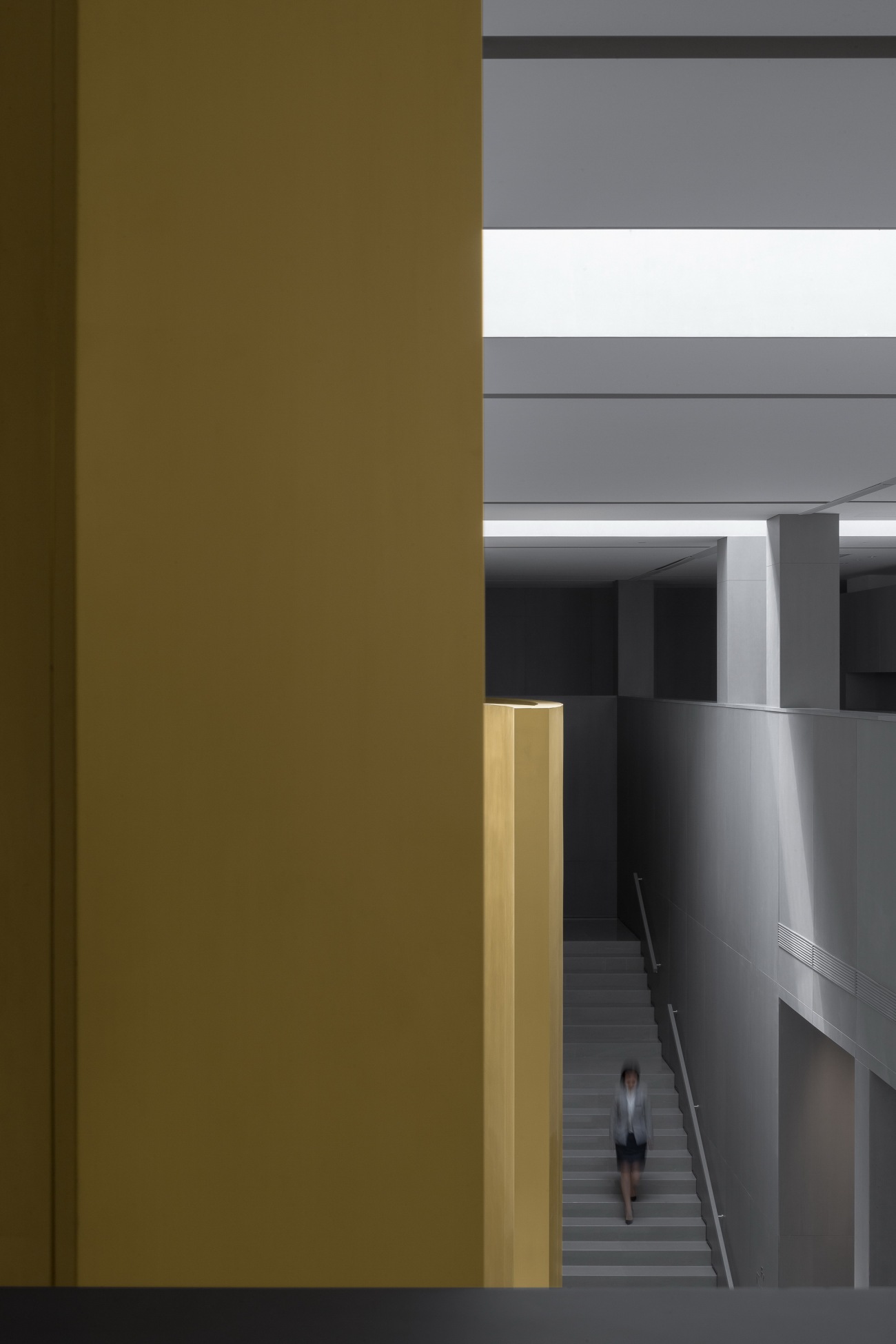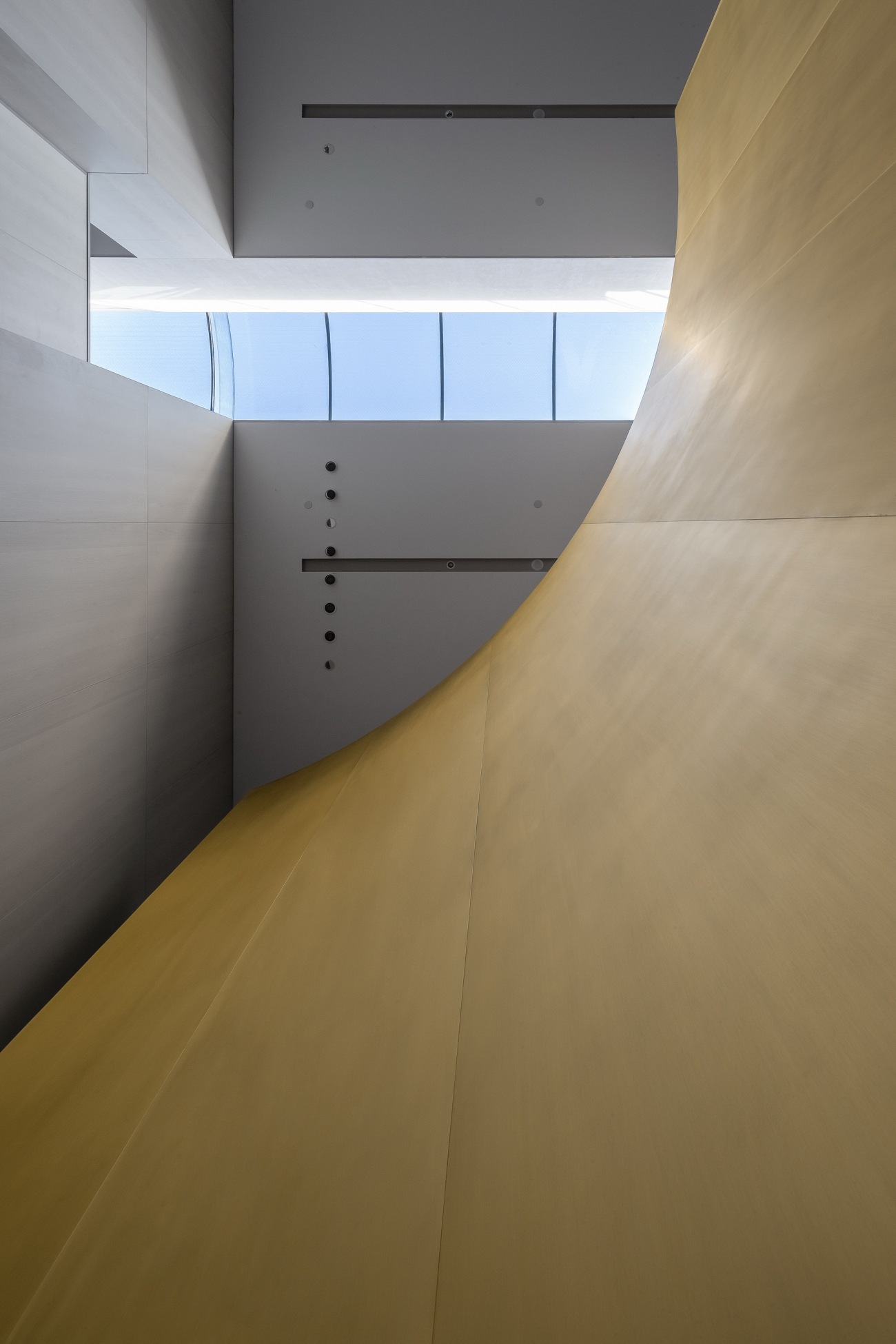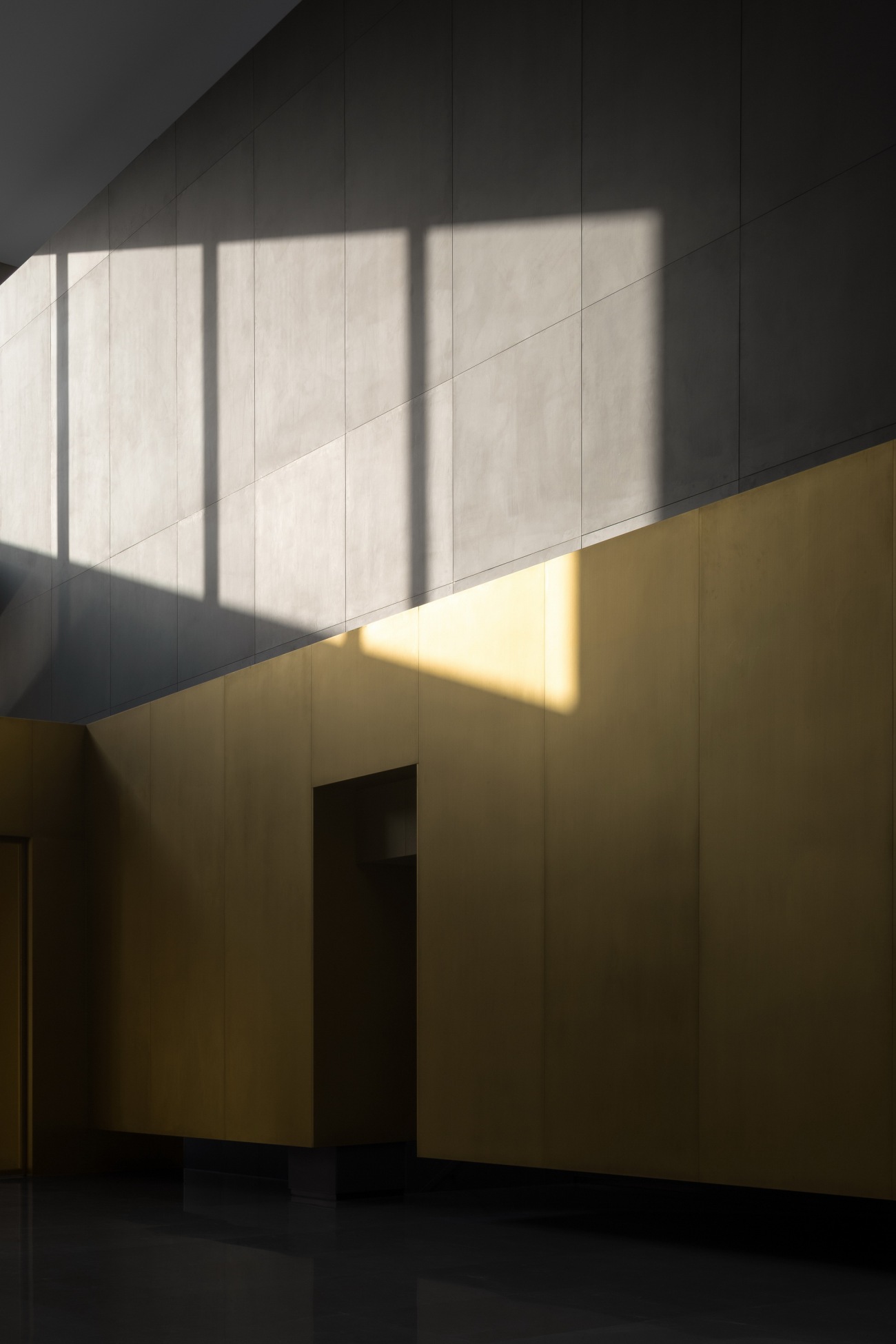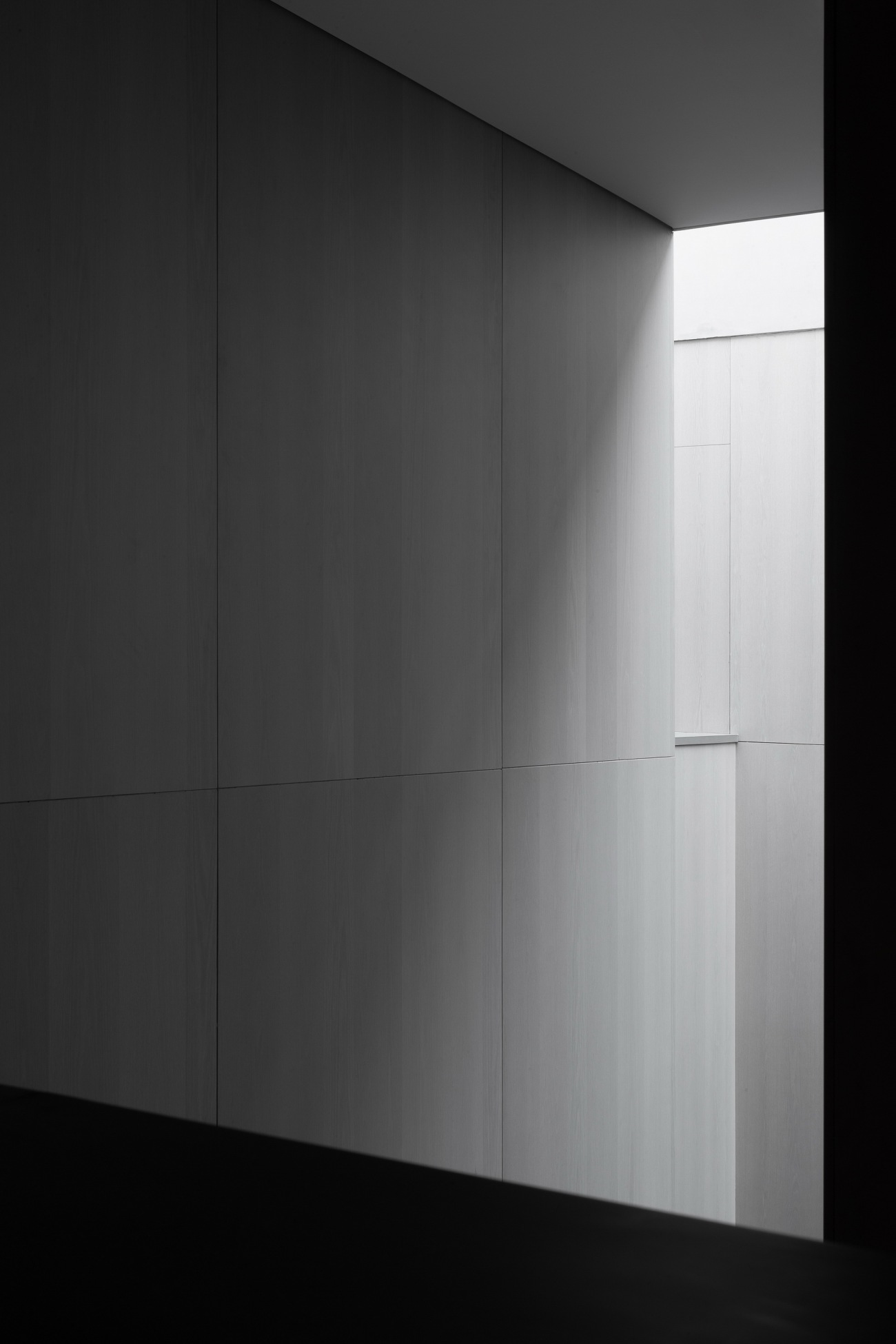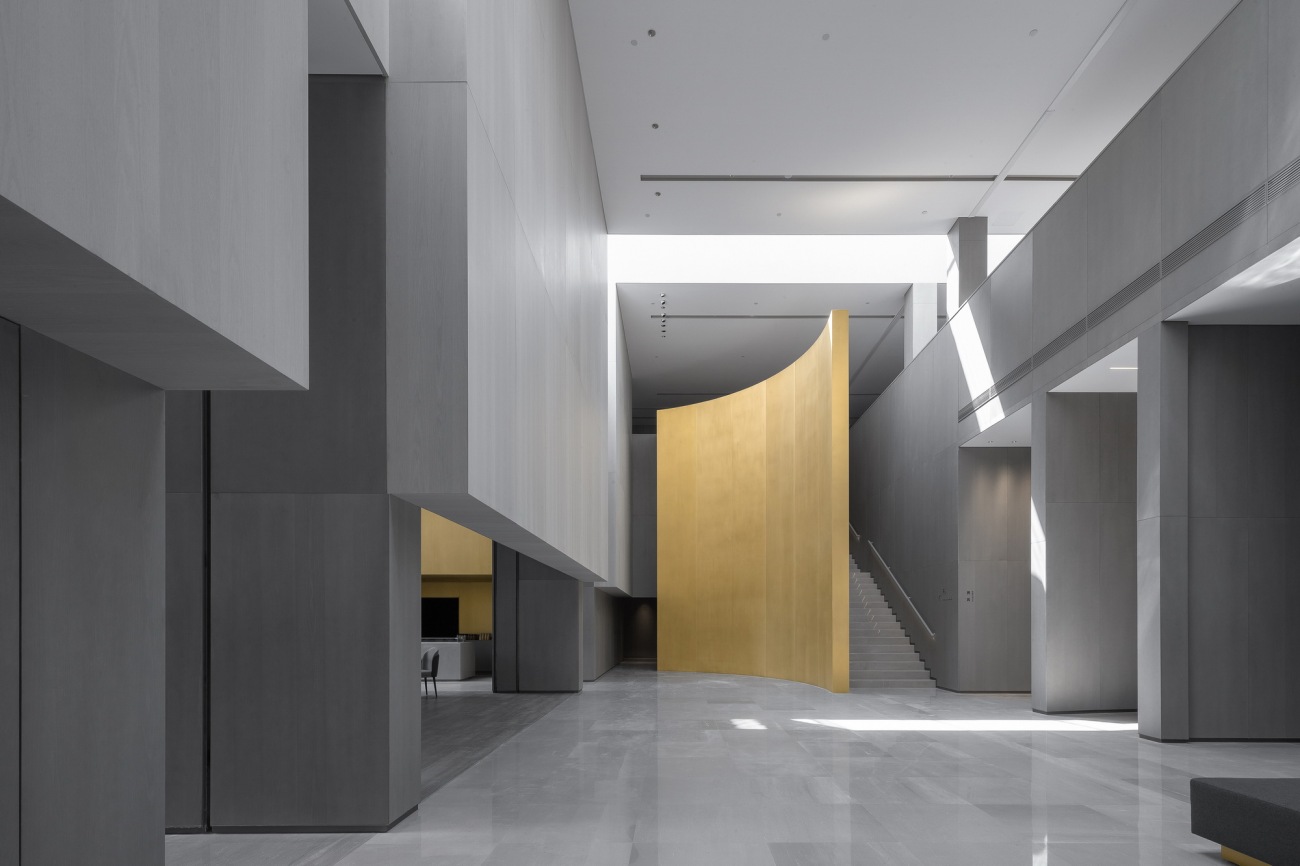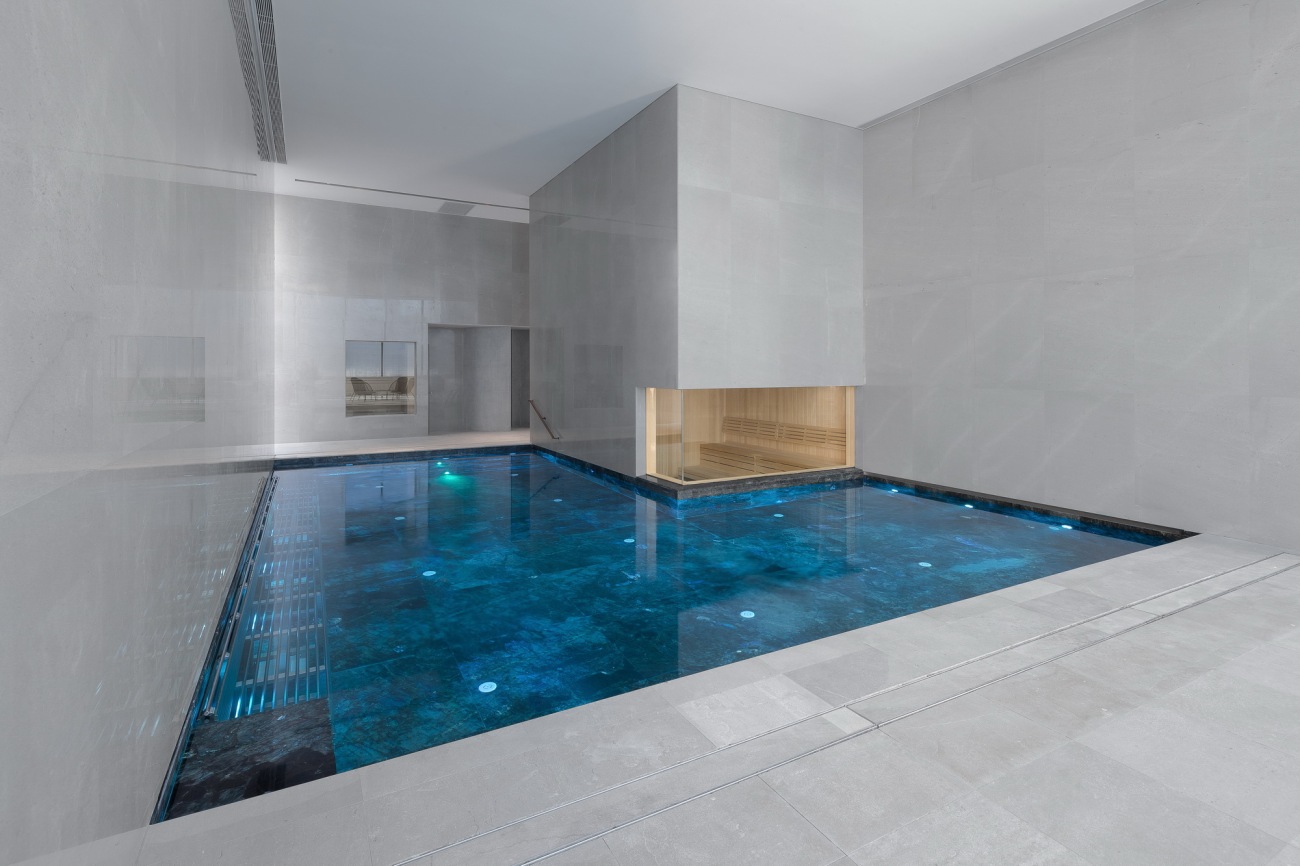既然“泡澡”是种精神生活,那么“澡堂”就一定是件艺术品。古罗马时期的优秀“澡堂”设计堪比教堂,尺度惊人的圆拱立柱、光滑闪亮的大理石、精致拼贴的马赛克和栩栩如生的雕塑,无疑不与现在理想的“澡堂”形成一种反差。空间比例和谐、几何语言简洁、材料肌理微妙,在玩味“光”与“水”的互动关系同时,本身就成为了当代艺术雕塑。
Bathing is a kind of spiritual life. In ancient Rome, bath design was comparable to the church. The incredible detail of the interior forms a contrast with the ideal bath now. The harmonious proportion, the concise geometry, and the different texture of the space accomplished a contemporary artwork.
▼项目外观
external view of the project
01 光之向往
Light
“光能凭空造型,勾勒出物体的轮廓;也能打破造型,分割僵硬沉重的空间。” 从路易斯·康到安藤忠雄,从万神庙到光之教堂,古今东西方建筑师对光的向往都镌刻在伟大的建筑作品中。杭州曲水兰亭的设计以“光”为核心,透过天窗这道“缝隙”来分隔空间,并赋予不同材质以丰富的表情。这些“缝隙”是天光的通道,也是设计师的画笔刻刀。
Light can depict the edge and draw the silhouette of an object, it can also partition space to bring fluidity into an area. The design team of Hangzhou Qushui-Lanting (The Meandering Water at Lan Pavilion) explores the relationship between water and light with their exquisite design concept. The ultimate goal is to create a balanced environment to meet people’s physical and spiritual needs. With ‘light’ at its core, the design uses vertical skylights to partition space. When the light touches different materials in various shades and forms, it not only defines the boundaries but also conveys the logic of the space, creating a connection between the indoors and the outdoors.
▼酒店入口
entrance of the hotel
强烈的平行阳光划过墙面时产生的浓烈阴影,带有一种夸张的戏剧性。而随着时间的流逝,光由平面流淌到曲面,影子也在墙上、地上缓慢移动时,却产生一种缠绵的诗意。细窄的切口处光线射下时,集结成束的“追光”则重新塑造了空间形态。“四时与朝暮之间,不同角度和性质的光线会在波动的水面上留下不同的痕迹。”光线的巧妙安排使得人们在沐浴的过程中可以感受到气氛与温度的微妙变换。
Water, a key element of the space, reflects the light at distinct angles at different times of a day, representing the interaction between the dynamic and static states of the space. Through the interplay of light and shadow, people can see the passage of time and experience a moment of tranquility.
▼大堂 光线从狭窄的切口处射下
lobby, light shining done through the cuts
▼接待台
reception
除此之外,设计师也通过“光”组织了“空间序列”。从开阔的建筑水景,进入两侧墙面限定的窄高空间,再到清爽天光洒下来的开阔中庭,进而到达近人尺度的餐饮空间,或者再次通过窄高的楼梯,由上方的天光指引变为尽头的光点诱惑……亮暗结合大小交替的空间体验,似乎能唤醒一些超出瞬时记忆的个人情感。
Besides, the designer also organizes the spatial sequence through light. From the waterscape of the building, walking into the narrow and high space which is limited by the walls on both sides, then get into the open atrium with skylight. The experience of being such an alternating space between light and dark, narrow, and wide seems to awaken personal emotions.
▼通往中庭的窄道
narrow passage connecting to the atrium
02 空间 “纵”“横”
Space
不只是现代主义,“几何”实际上是建筑界的古老话题,与其说是一种设计元素或语言,不如说是一种逻辑方法。在曲水兰亭的设计中,设计师就利用“几何”进行了体块分区,并把这种语言贯彻到室内和家具设计细节中。杭州曲水兰亭的总面积近9000平方米,天窗最高为11米,空间尺度及大。设计师大胆地通过6条天窗对应6条长廊的方式,将这样一个巨大的体量分化为7个并肩分布、明确独立却相互联系的体块。用一种景观的方式,即把整个空间当作一个自由的庭院,进而在各个空间单元中,把建筑的功能和形态还原为基础要素。
Not only modernism, but geometry is also actually an on-going topic in the field of architecture, which is a logical thought more than a design element or language. The design team of Qushui-Lanting used geometry to partition the volume and implemented this logical thought into the interior and furniture design details. The total area of Qushui-Lanting is nearly 9000 square meters, the skylight is 11 meters high above the floor. The designer divides this huge volume into seven distinct and interconnected chunks, which are distributed side by side.
▼中庭 弧形墙面划分空间
atrium space defined by curved walls
▼天窗照亮中庭
space illuminated by skylights combination
其中建筑的前半部分,包括入口大厅、浴室、浴池等空间使用的是纵向的视觉语言,高高的重复柱子、多米诺骨牌般强调透视的门洞、不断延伸的黄铜“缎带”、连续不断的长条玻璃天窗都在强调这一视觉语言。及至整个空间高潮——高高的中庭,纵向语言汇聚,与横向线条交错,共谱一曲“空间交响乐”。天窗间的实体在中庭垂下,降至地面时又戛然而止,仿佛三块厚重的幕帘,既为餐饮空间提供了视觉隔断,又清晰地指出了整个空间的划分逻辑。而中庭空间的视觉效果也是最为丰富的,方形连续空间的仪式感与曲面柔和的金色插件相结合,从不同的角度看去能得到迥然的“对话”小景。
The building uses the longitudinal visual language, which is emphasized by the continuous ribbon – brass and long vertical skylight, and the key point; atrium. It has been clearly pointed out the function zoning. The abundant visual effect in the atrium on account of the gentle and elegant brass sculpture.
▼天窗划分的浴池
indoor pool divided by skylight
▼从湿蒸区看向浴池
view to the indoor pool from the steam room
▼更衣区
changing area
当这些面积大小不一、表面肌理各异的体块再受到光线的切割时,整个光影空间似乎就变为了一组艺术装置——如同法国雕塑家Xavier Veilhan的构成作品,抽象的几何雕塑中每个单元之间的比例、色彩都经过精心推敲,在光的“赋活”中倍加生动。正如设计师所说:“我不是要在空间内放置一两件艺术作品,而是要艺术成为空间的一部分。”这种用做艺术雕塑的方式做建筑的想法,也延续到了空间里的家具设计中。入口大厅与中庭内的沙发或边桌,其实就是缩小版的建筑模型——完全的几何形态,细致的包边与镂空,考究的比例关系,设计师对建筑品质的要求也如实地体现在其细节中。
When the light touches the different surface, the various texture makes the whole space seems to become a set of abstract sculpture. As the French sculptor Xavier Veilhan said, “I don’t want to put one or two pieces of art in the space, I want art to be part of the space.” The thought of creating an artistic sculpture is used to the spatial design as well as the furniture in the space. The sofa in the entrance hall and atrium are actually miniature architectural models; geometric forms, delicate edges, and exquisite proportions. The design details are showing everywhere in space.
▼天窗下的通道连接餐厅
passage under the skylight connecting to the restaurant
▼走廊空间
corridor
▼餐厅
restaurant
▼休息区
lounge
03 实用艺术-空间的“指南针”
Practical Art
打磨精良的黄铜以体块的形式呈现在空间中,已不仅仅作为空间材料来使用,也成为雕塑艺术品展示在空间里,打破了设计的局限与界限。它既是独立的,又和空间相互交融。自然而然带动着空间的节奏,编排出整个灰色材质空间的导视系统,成为空间的“指南针”。黄铜,作为精神与物质的并存体,其金属材质具有光的温度,金属与光,光与水承载着整个空间,展现其个性的同时,奏乐出空间独特的气质。
Brass is used as a material, its elegant and dramatic shape makes it become a piece of artwork. The goal is to break the boundaries and limitations of design. Brass is independent as a sculpture art but as a wall that connects with space. It drives the rhythm and arranges the guidance system for the entire gray tone of spatial design. Naturally, becoming a “compass” of the space. In a sense, the reflection of brass has the feature of natural light. The relationship between metal, light, and water is showing each personality, and playing a unique spiritual temperament in the space.
▼黄铜插件细部
details of the brass installations
▼空间中的光与影
light and shadows in the space
▽轴侧图
项目名称:杭州曲水兰亭度假酒店
设计机构:北京对角线设计
公司网站:www.duijiaoxian.net
联系邮箱:djx001@hotmail.com
项目地址:浙江省杭州市观澜路钱江世纪公园E1幢
建筑面积:8800㎡
项目设计&完成年份:2018年5月-2019年12月
主创及设计团队:王兵(对角线设计创始人)及对角线设计团队
摄影:邵峰
Project Name: Hangzhou Qushui-Lanting Resort Hotel
Design: DJX Design Studio
Website: www.duijiaoxian.net
Contact e-mail: djx001@hotmail.com
Project Location: Building E1, Qianjiang Central Park, Guanlan Road, Hangzhou, Zhejiang.
Gross Built Area: 8800㎡
Design & Completion Year: May 2018 to Dec 2019
Leader Designer & Team: Bing Wang(founder),Diagonal design team
Photo Credits: Feng Shao
更新日期:2023-07-28 16:53:18
非常感谢 对角线设计 带来的精彩项目, 查阅更多Appreciations towards DJX Design for sharing wonderful work on hhlloo. Click to see more works!
